So I've Two lists in Google sheets. one is a (relatively short) list of names, let's say a rooster of employees. The second list is (rather a long) list of shifts, which notes the employees who were present.
for example:
List A - (rooster):
___________________
Mike
Linda
Carrie
Dave
List B - (Import_shift_data):
____________________________
Mike, John
Dave, Linda, Mike
Carrie
Dave, John
Linda
Mike
Dave, Carrie, John, Mike
My goal is to count the presence of each employee.
Now, here are the tricky parts:
List B updates every day, and each cell contains more than one name.
List A also updates, as some employees join the team and other leave.
Each shift could by a day shift, or a night shift (listed in another column next to List B) and I need to count them separately.
The Day/night column is in a parallel column next to shift column, and has one of two values, "Day" or "Night"
So my notion was to create an array formula, who can expand or shrink based on the number of values in List A. The problems is, I Can't yield and results from using the whole {list A} as the first argument in the SEARCH function.
I've tried the foloowing:
=Arrayformula(IF(INDIRECT("A2"):INDIRECT(CONCATENATE("A",MAX(Arrayformula(IF(isblank($A:$A),"",Row($A:$A)))))) = 0,"",COUNTIFs('Import_shift_data'!$P:$P,INDIRECT("A2"):INDIRECT(CONCATENATE("A",MAX(Arrayformula(IF(isblank($A:$A),"",Row($A:$A)))))),'Import_shift_data'!$M:$M,"Night")))
. But this formula only works for a shift with a single employee.
I also wrote this one:
=Countifs(Arrayformula(ISNUMBER(SEARCH(A2,'Import_shift_data'!$P:$P))),"true",'Import_shift_data'!$M:$M,"Night")
which works fine, but I need to manually drag it up or down every time List A (The rooster) is updated.
So my end game is to have two arrays, one that counts night shifts for each employee, and one who counts day shifts. those arrays should automatically shrink or expand by the size of the rooster. (List A)
Note: If relevant, I may also note that the names in {List A} may contain more than one word, in case there are two employees with the same first name.
A copy of the spreadsheet:
https://drive.google.com/open?id=1HRDAy9-T_rflFpzanZq0fmHpV0jTZg6Rc4vHyOu-1HI
